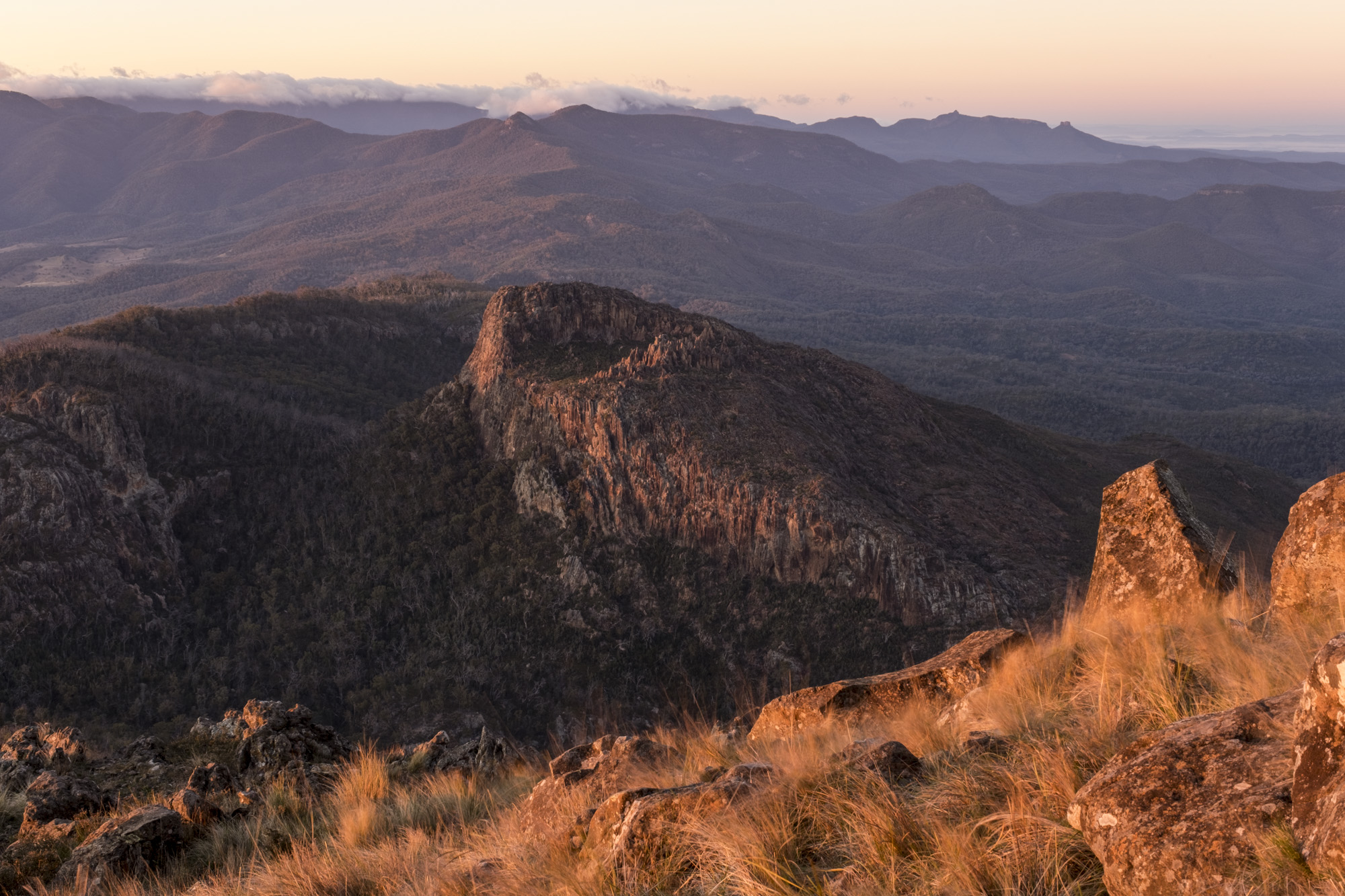
Grattai in Mt Kaputar National Park is only 4150 hectares in size, the smallest wilderness in NSW. This rugged region adjoins two other, much larger declared wilderness areas to the south (Nandewar and Rusden), and there is wilderness quality land adjoining outside the park, so it doesn’t seem anywhere near that small. The distances you travel in Grattai aren't large, but the challenges will make them seem so.
Grattai Mountain (1312m) stands proud from the sweeping plain of the Namoi Valley. It is one of only a few true mountains in NSW and rises 800m from Waa Gorge picnic area, the starting point for this short walk of medium-hard difficulty.
To get to Waa Gorge from Narrabri head north on the Newell Hwy (A39), then after 3km turn right onto Killarney Gap Road (Bingara Road), then after about 21km left onto Mellburra Road (SR3 to Terry Hie Hie) and after another 30km finally right onto the Allambie Road passing the Glen and Allambie properties to reach the park. On the Glen property you must ford Berrygill Creek, which small cars will find challenging and creek ford is to be attempted in dry weather only. Test the water level to ensure its below the radiator (for EVs - check the user manual). If in doubt, don’t drive into the creek and risk getting swamped.
Narrabri is the obvious stopover destination for Grattai Mountain if coming from Sydney or Newcastle, however, Ian and I opted to bivouac in the park after exploring Waa Gorge just before sunset.
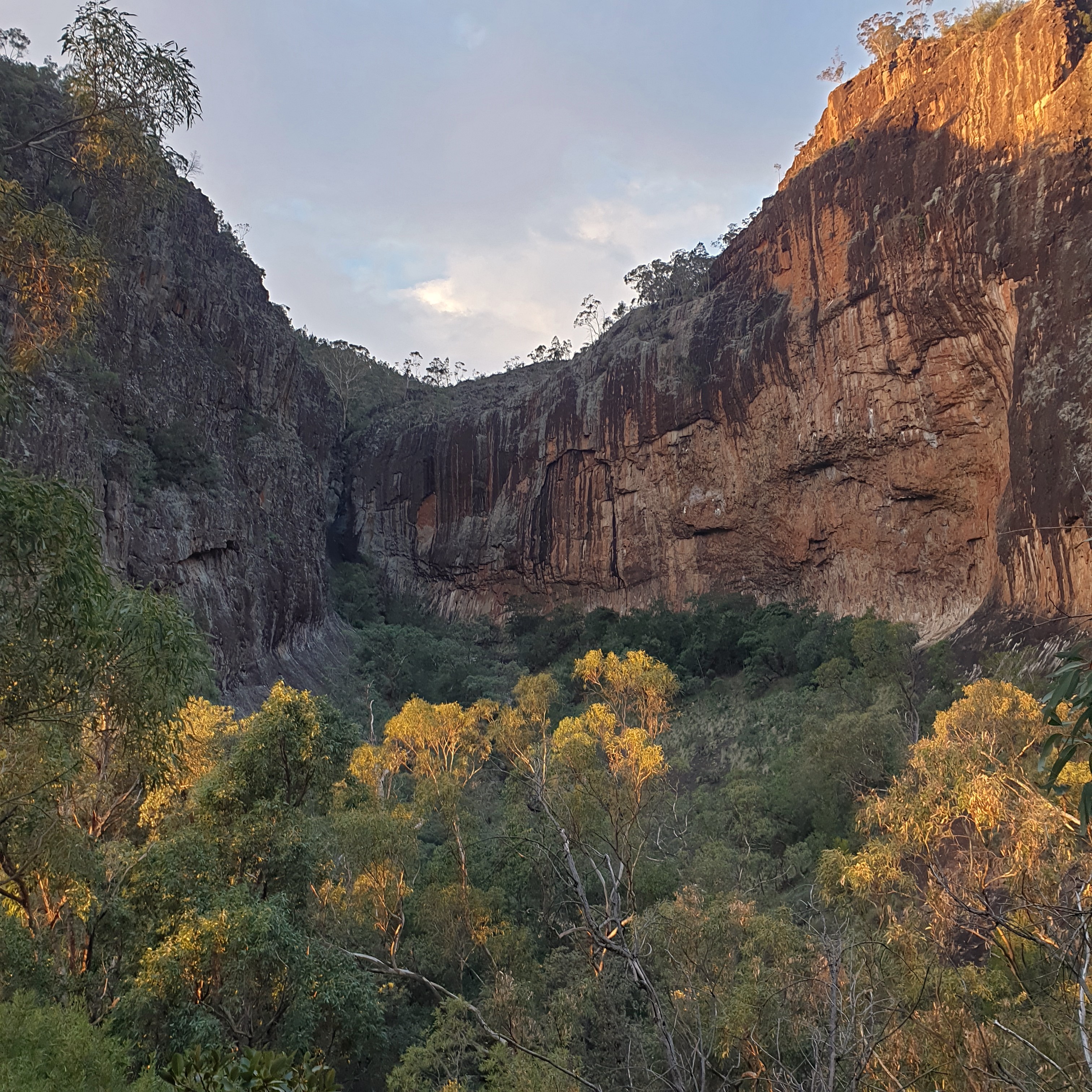
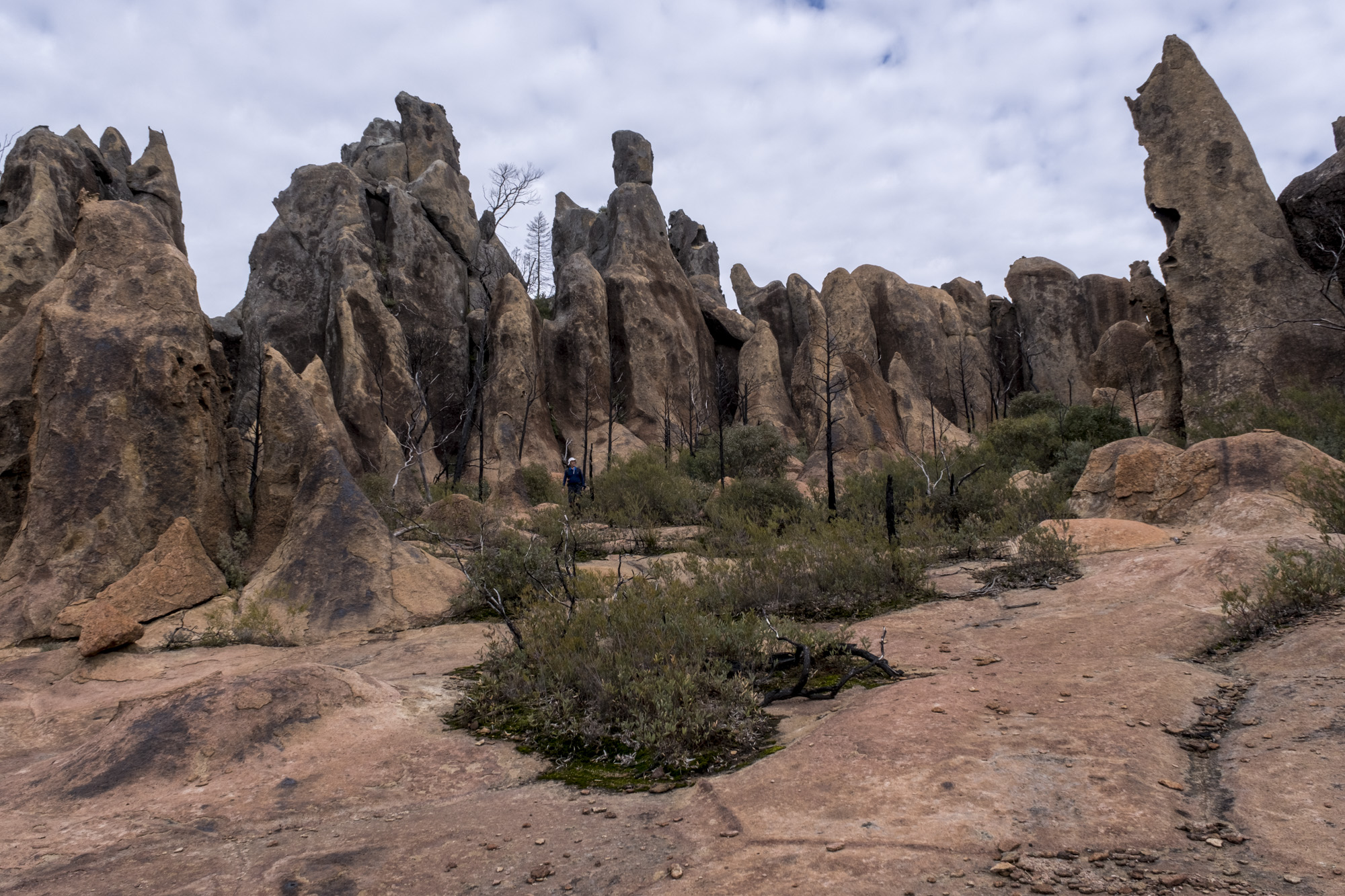
The wilderness offers outstanding scenery and geodiversity of Nandewar Range, Ginns Mountain, Waa Gorge, as well as Grattai Mountain; the latter offering 200km views to the west over the western slopes and amazing sunsets. The geology is predominantly volcanic Tertiary basalt, rhyolite and trachyte, overlying an older, basement of sandstone and conglomerate sedimentary rocks. The vegetation is a mix of Snow Gums on the peaks, Grey Gums, Angophoras with acacias and daisy bushes, and in wetter gullies native pear, small leaved lilly pilli, stinging trees and figs.
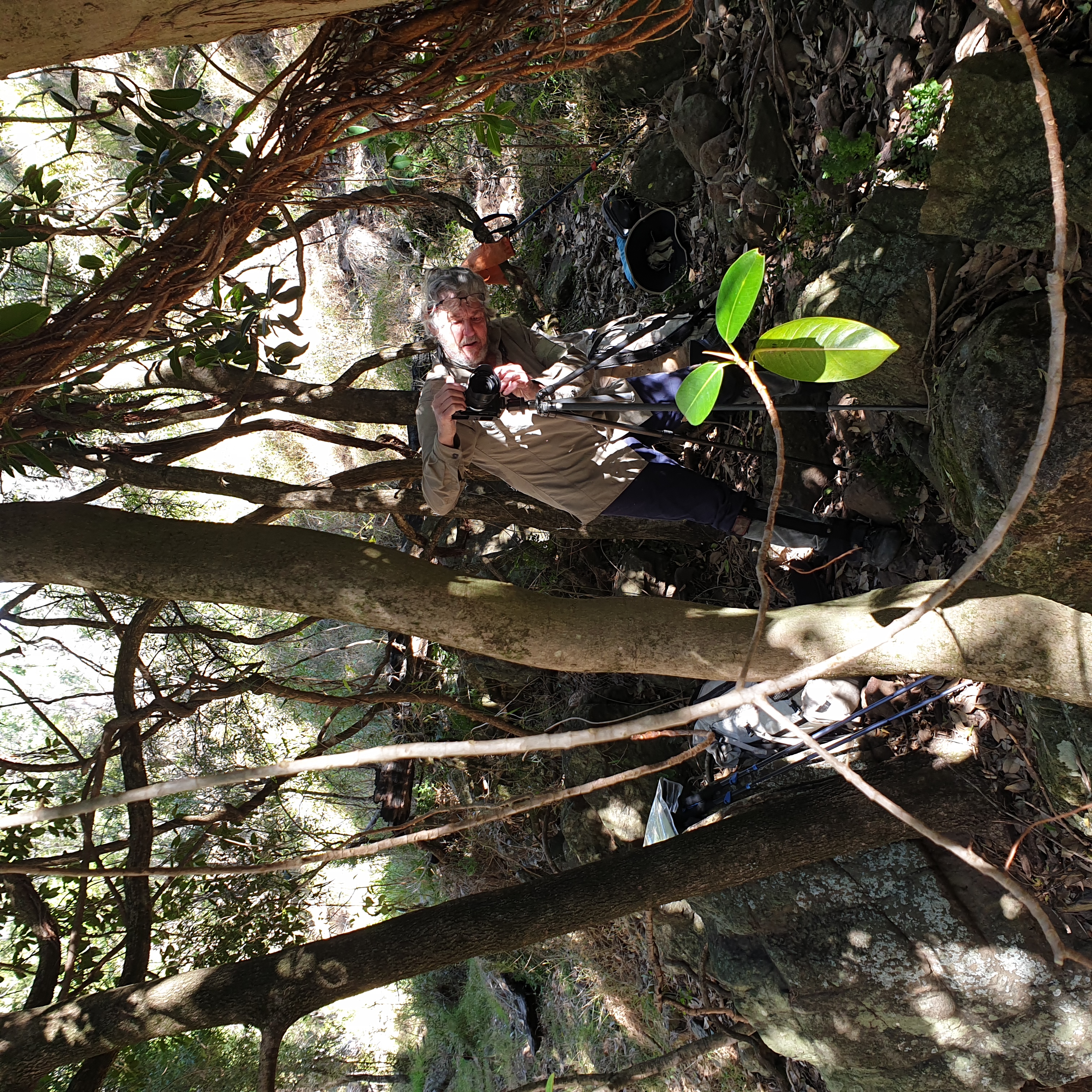
Walk challenges come in the form of large patches of scrub, in response to the 2019 wildfires. The scrub is comprised mainly of cough and sticky-leaved daisy bushes that aren’t prickly, although a scattering of prickly acacias and bursaria will be encountered. The north-east facing slopes of the Nandewar Range from Waa Gorge were badly burnt, so have the worst scrub. The northern end of the park was supposedly the least burnt in the 2019-2020 conflagration, but where the tree canopy is damaged, as on steep slopes, the rich volcanic soil guarantees thick scrub, so bring “scrub gloves” (sailing gloves are ideal).
The walking routes that follow creek lines avoid most of the scrub. Stoney Gully and adjoining Grattai Fire Road can be exploited to access the headwaters of Berrygill Creek and, with a bit of careful navigation, the saddle between Ginns and Grattai mountains. Heading south-west from Waa Gorge you can pop over this scrubby saddle, to the obvious first night destination of Grattai Spring, a mere 6km. The spring will be reliable, except in drought.
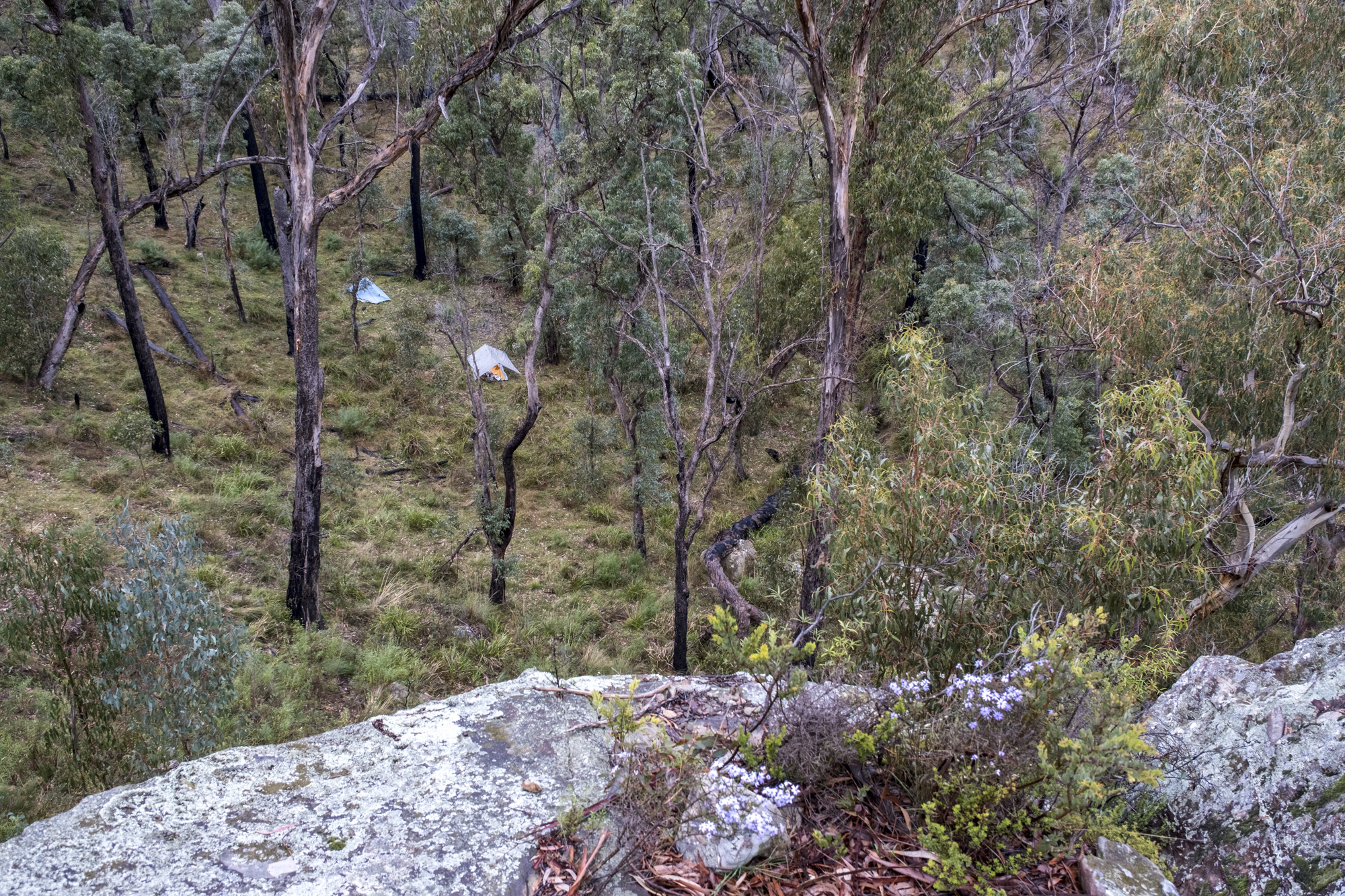
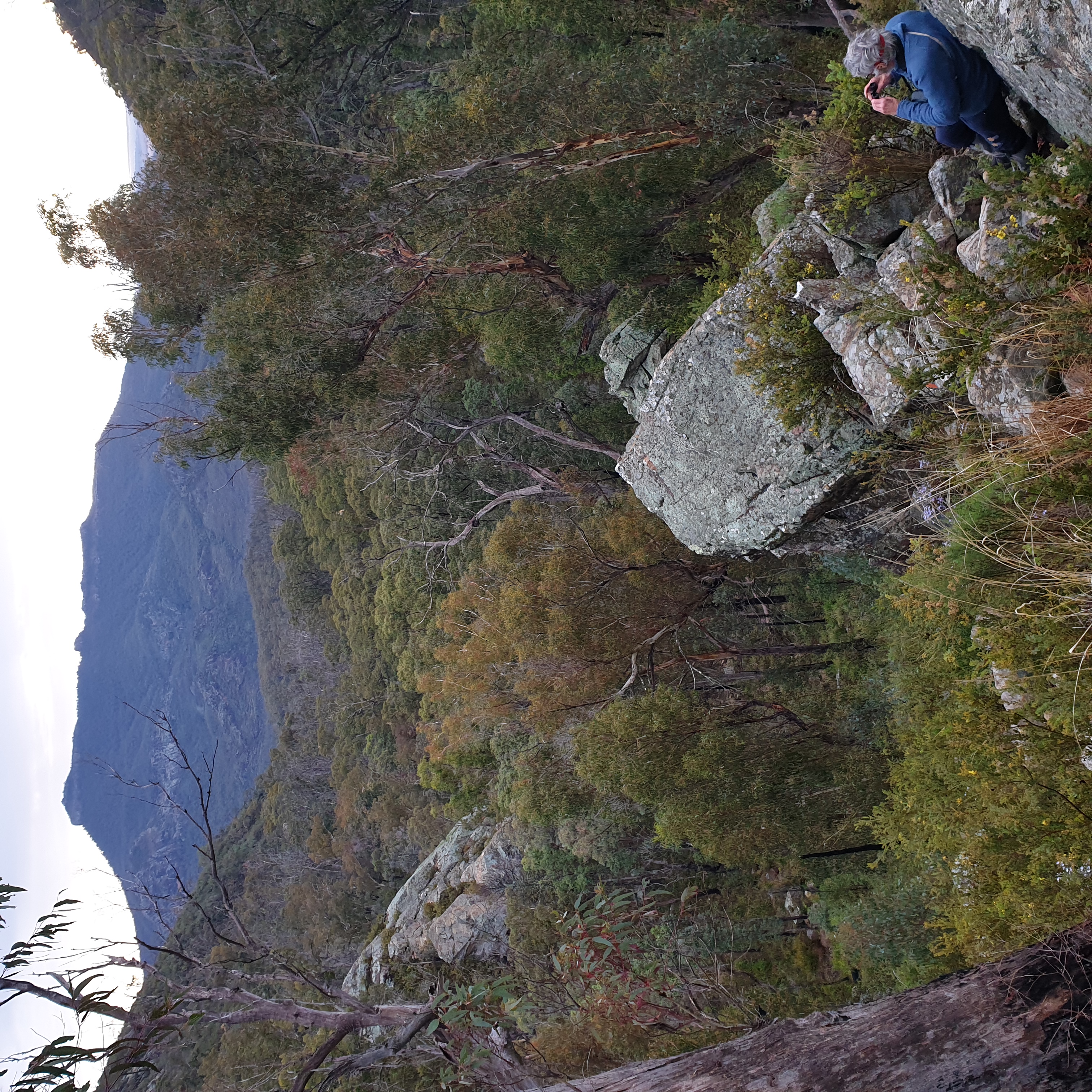
Grattai Spring has a lovely grassy campsite above it. If your time is short, grab water there and head up Grattai Mountain for a high camp. Access is straight forward; a constant 450m ascent on a grassy slope of Nandewar Range. If you have another day, then visit the volcanic megaliths on Gins Mountain. The obvious route for non-climbers is a rocky scramble to the west facing side of the mountain from the spring. This route is hard work, battling scrub and then climbing through a jumble of rocks. Your efforts will be rewarded by two or so dozen 10m tall megaliths.
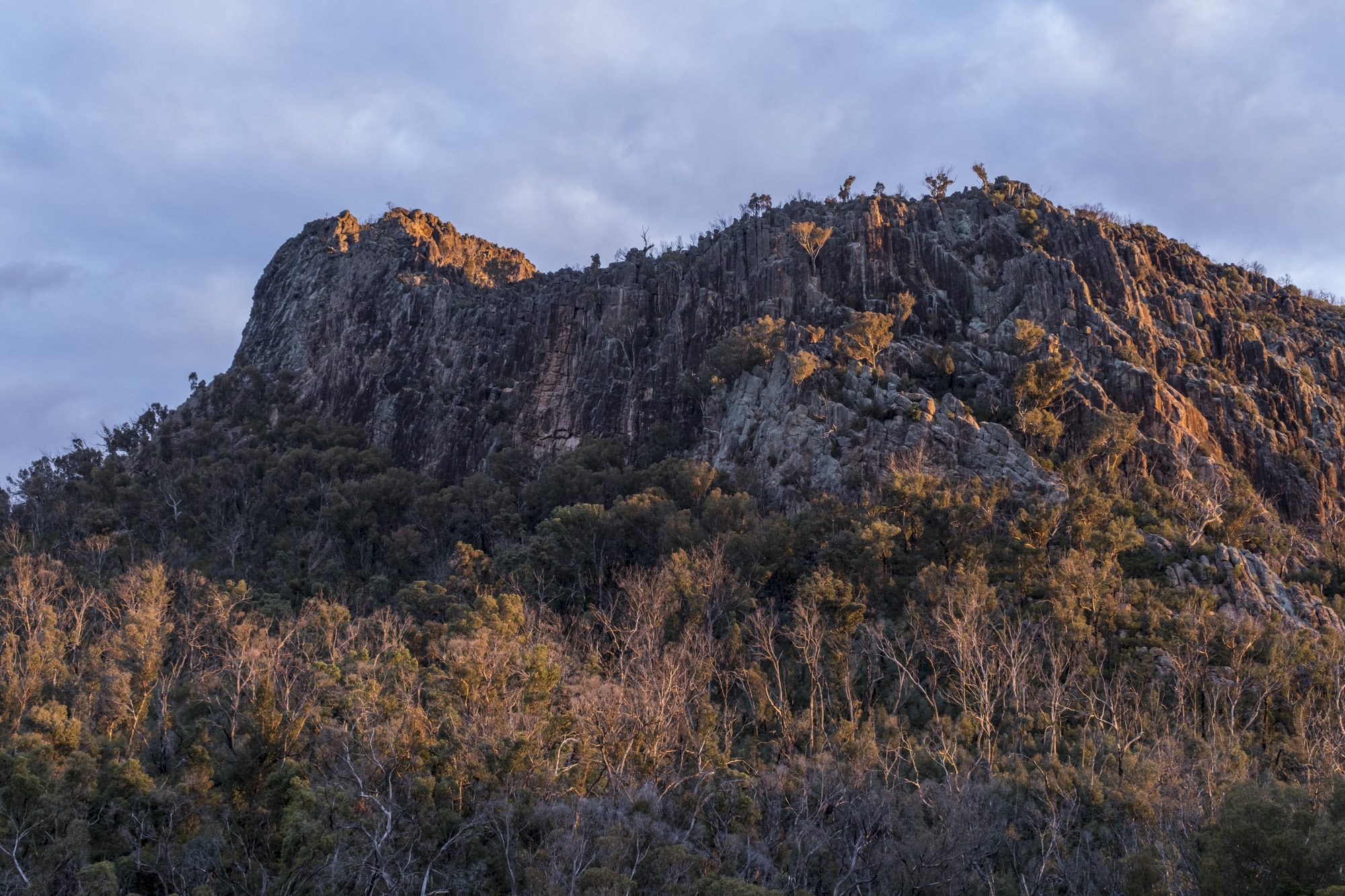
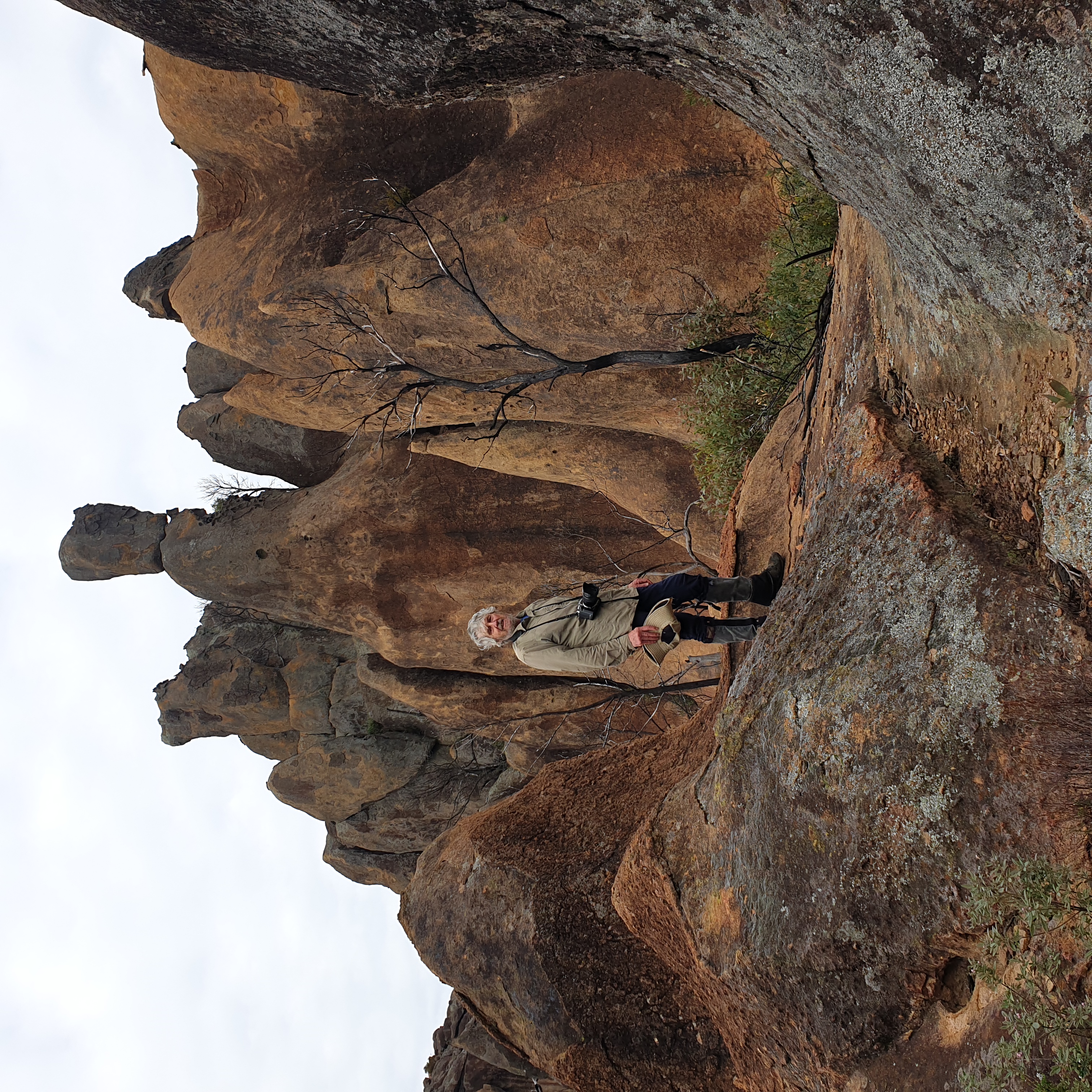
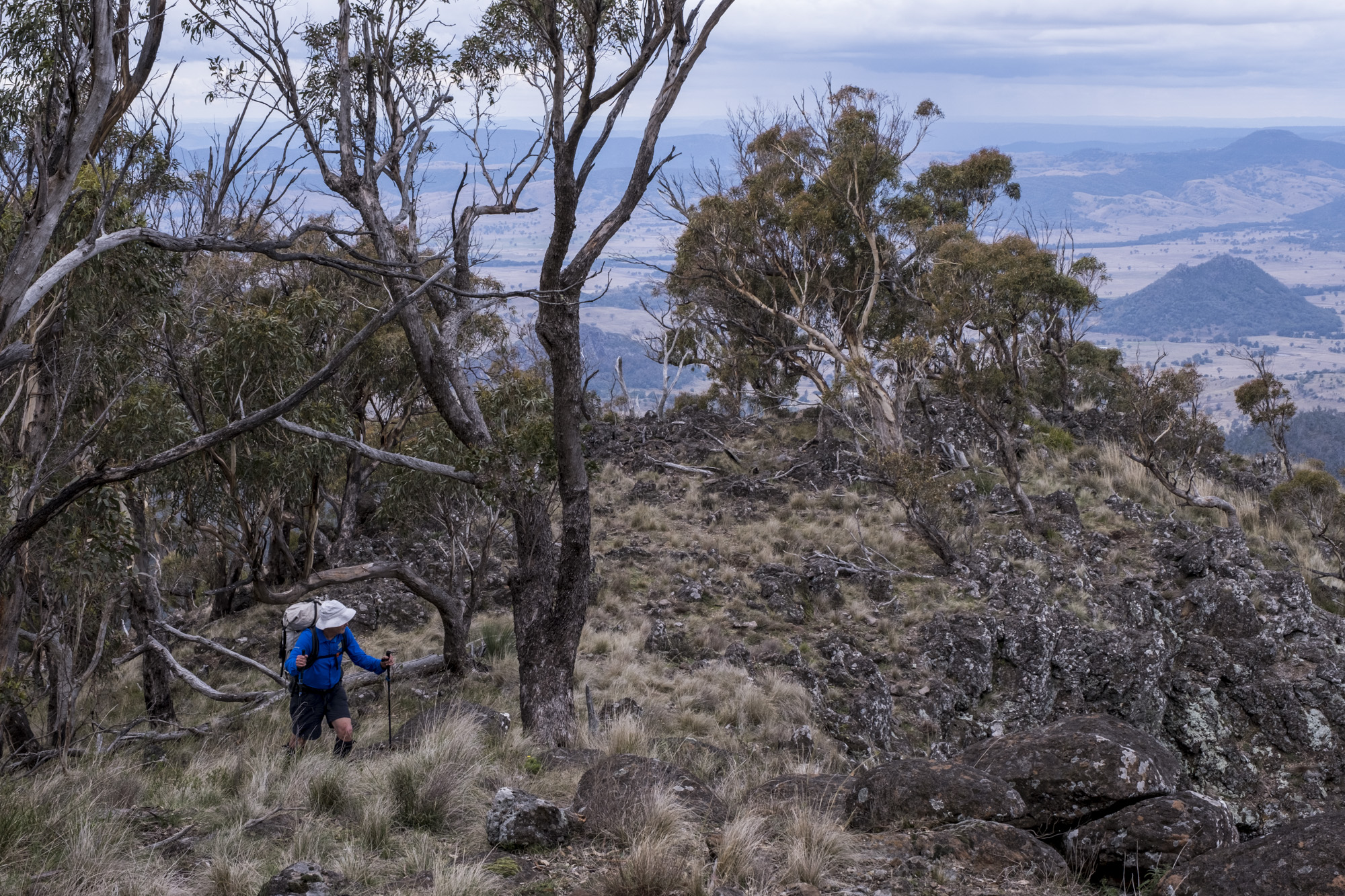
It is possible to visit Gins Mountain, return to the spring for lunch, collect 4 or 5l of water for a high camp on Grattai Mountain. Sunsets and views of Mt Kaputar’s many peaks are the reward.
On descent, you can take in the views to the west by walking off the mountain in that direction with great views of Castle Top Mountains and Mount Lawler, but if you do exit that way you’ll run into 3km of thick scrub on the way down to Berrygill Creek.
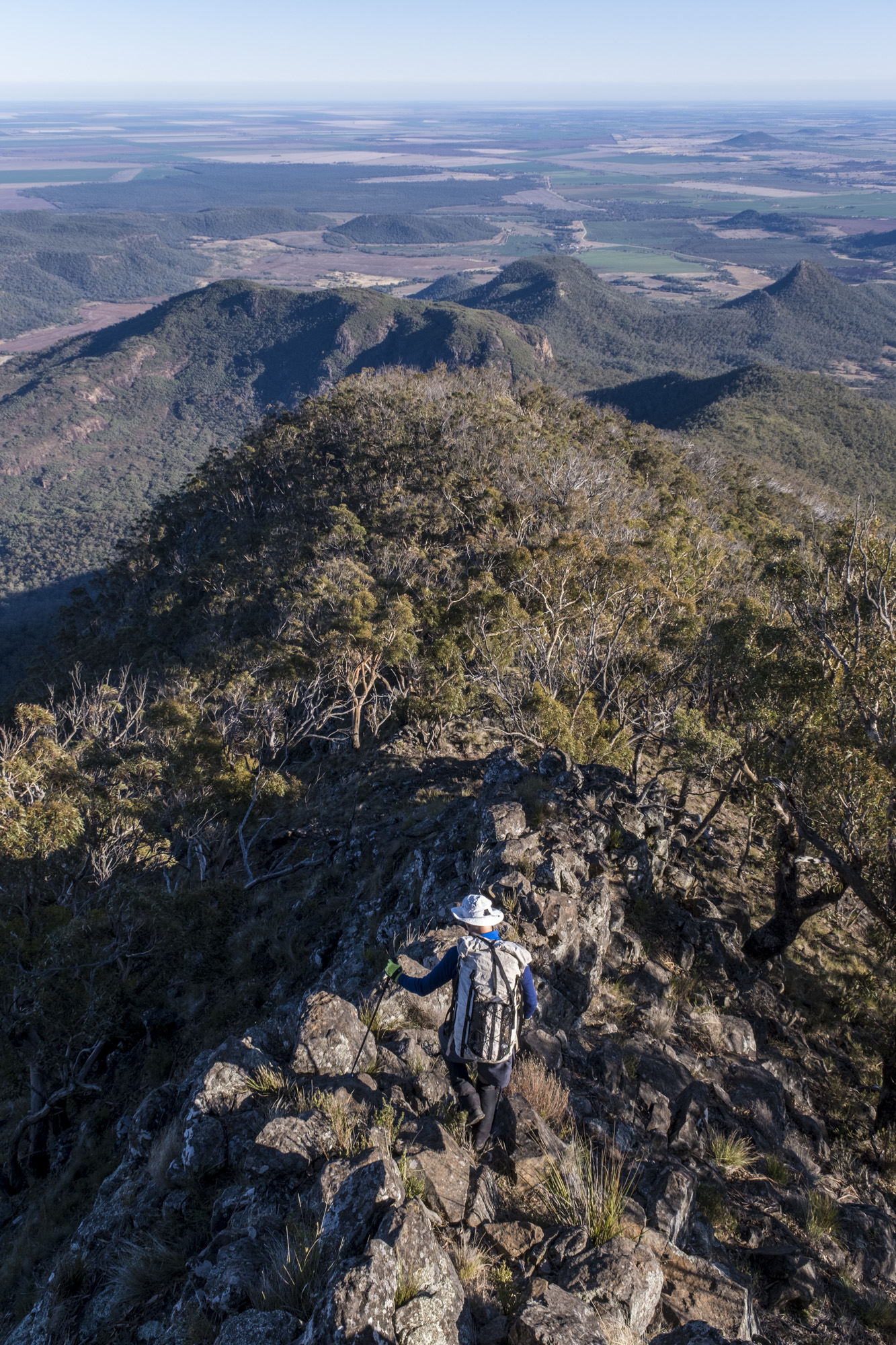
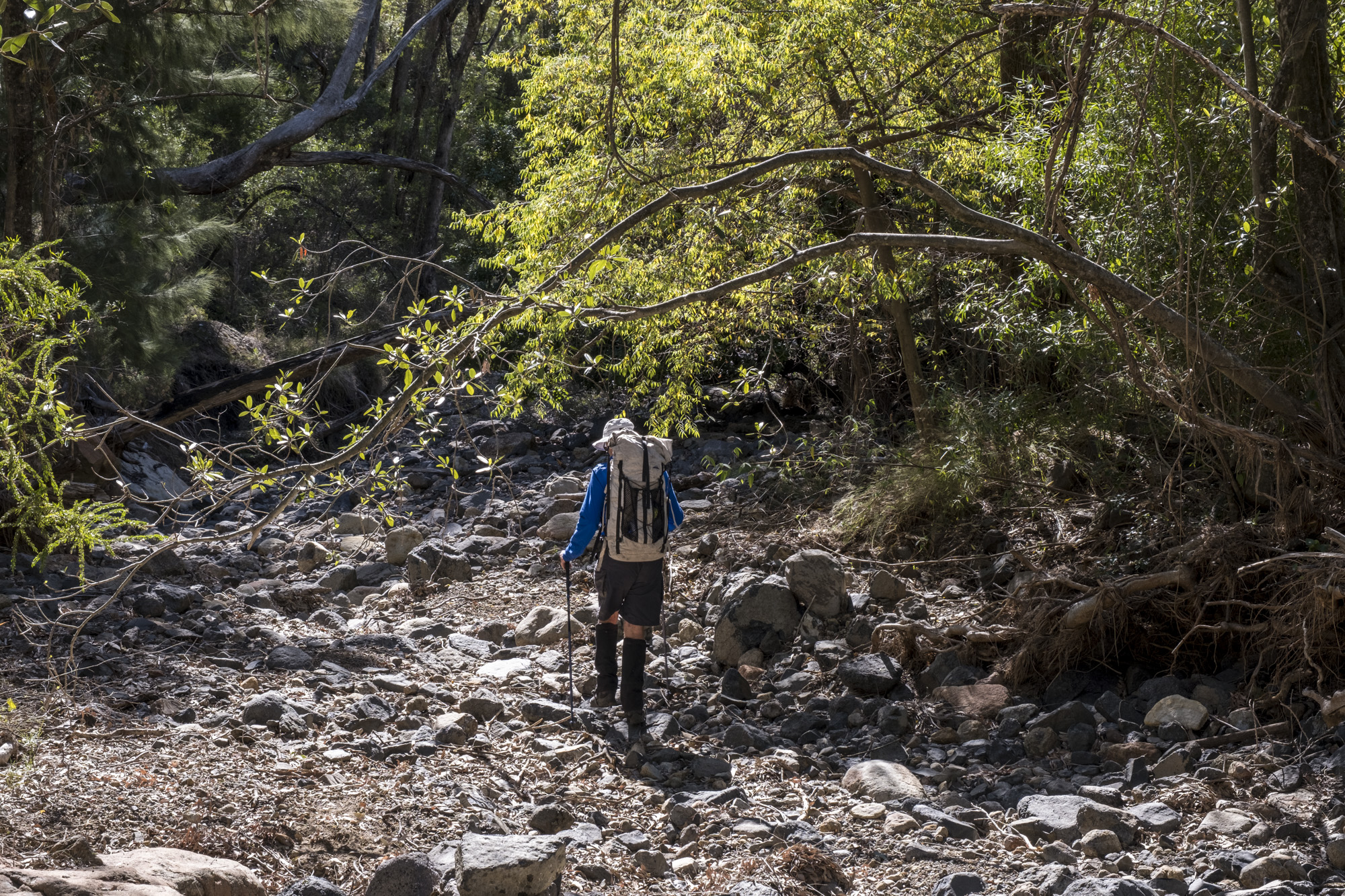
Apart from the outstanding scenery you will almost certainly run into large herds of goats that have taken over the park and apparently displaced nearly all the wallabies.
- Log in to post comments